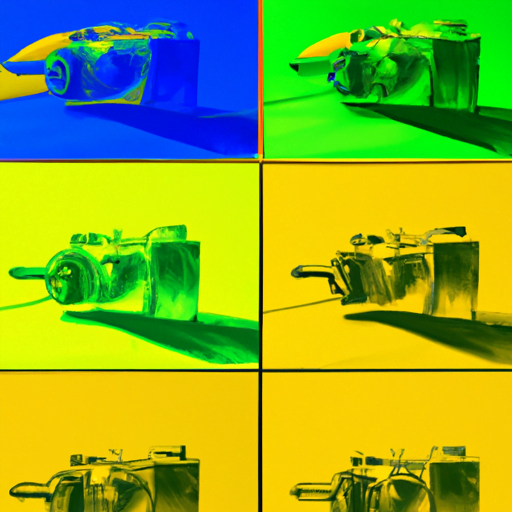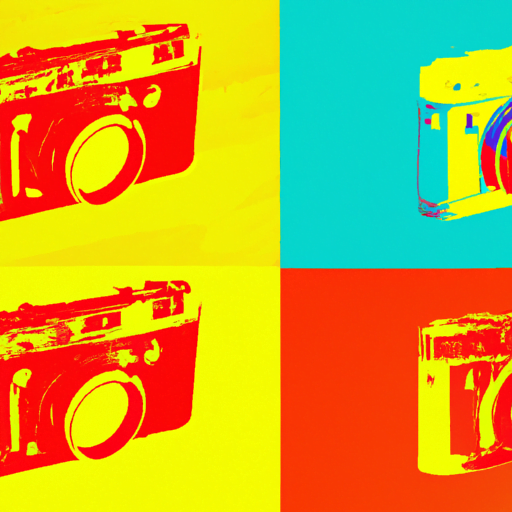
-
Table of Contents
- Incorporating Real Photography into Graphic Design
- The Power of Real Photography
- Using Real Photography as a Background Image
- Real Photography as a Focal Point
- Real Photography as a Texture or Overlay
- Real Photography as a Storytelling Element
- The Challenges of Incorporating Real Photography
- Case Studies: Successful Examples of Real Photography in Graphic Design
- Apple’s Product Photography
- Nike’s Lifestyle Photography
- Conclusion
Incorporating Real Photography into Graphic Design

Graphic design is a powerful tool that allows us to communicate visually and convey messages effectively. Traditionally, graphic designers relied heavily on illustrations, typography, and digital art to create visually appealing designs. However, in recent years, there has been a growing trend of incorporating real photography into graphic design. This article explores the benefits and challenges of using real photography in graphic design and provides valuable insights for designers looking to incorporate this technique into their work.
The Power of Real Photography
Real photography has a unique ability to capture the essence of a moment, evoke emotions, and tell stories. Unlike illustrations or digital art, real photographs have an inherent authenticity that resonates with viewers. By incorporating real photography into graphic design, designers can tap into this power and create designs that are visually striking and emotionally engaging.
Real photography can be used in various ways in graphic design:
- As a background image
- As a focal point
- As a texture or overlay
- As a storytelling element
Let’s explore each of these applications in more detail.
Using Real Photography as a Background Image
One of the most common ways to incorporate real photography into graphic design is by using it as a background image. By using a real photograph as a background, designers can create a visually appealing and immersive experience for the viewer. The photograph can set the mood, convey a specific atmosphere, or provide context for the design.
For example, a website for a travel agency could use a stunning photograph of a tropical beach as the background image. This instantly transports the viewer to a vacation mindset and creates a sense of desire to explore the destination. The photograph adds depth and realism to the design, making it more engaging and memorable.
Real Photography as a Focal Point
Incorporating real photography as a focal point in a design can draw attention and create a strong visual impact. By placing a real photograph at the center of the design, designers can highlight a specific subject or convey a particular message.
For instance, a poster promoting a music festival could feature a photograph of a famous musician performing on stage. This photograph becomes the focal point of the design, capturing the energy and excitement of the event. The use of real photography in this case adds credibility and authenticity to the design, making it more compelling for the target audience.
Real Photography as a Texture or Overlay
Another way to incorporate real photography into graphic design is by using it as a texture or overlay. By applying real photographs as textures or overlays, designers can add depth, texture, and visual interest to their designs.
For example, a brochure for a luxury hotel could use a photograph of a marble texture as an overlay on top of the design elements. This adds a sense of elegance and sophistication to the design, making it more visually appealing and luxurious. The use of real photography as a texture or overlay can elevate the overall aesthetic of the design and create a more immersive experience for the viewer.
Real Photography as a Storytelling Element
Real photography has a unique ability to tell stories and evoke emotions. By incorporating real photographs that capture specific moments or experiences, designers can create designs that resonate with viewers on a deeper level.
For example, a brochure for a wildlife conservation organization could feature real photographs of endangered animals in their natural habitats. These photographs not only showcase the beauty of the animals but also convey a sense of urgency and the need for conservation efforts. The use of real photography in this case helps to create an emotional connection with the audience and inspire action.
The Challenges of Incorporating Real Photography
While incorporating real photography into graphic design can be highly effective, it also presents some challenges that designers need to consider:
- Quality and resolution: Real photographs need to be of high quality and resolution to ensure they look professional and visually appealing in the design.
- Consistency: It can be challenging to find a collection of real photographs that have a consistent style and aesthetic, especially when sourcing from different photographers or stock photo websites.
- Copyright and licensing: Designers need to ensure they have the necessary rights and permissions to use real photographs in their designs, especially when using photographs taken by others.
- Integration with other design elements: Real photographs need to seamlessly integrate with other design elements, such as typography and illustrations, to create a cohesive and visually pleasing design.
By being aware of these challenges and addressing them proactively, designers can overcome the potential pitfalls of incorporating real photography into their designs.
Case Studies: Successful Examples of Real Photography in Graphic Design
Let’s take a look at some successful examples of real photography in graphic design:
Apple’s Product Photography
Apple is known for its sleek and minimalist product designs. One of the key elements that contribute to the overall aesthetic of Apple’s designs is their use of high-quality product photography. Apple’s product photographs showcase their products in a clean and visually appealing way, highlighting their design and functionality. The use of real photography in Apple’s graphic design helps to create a sense of trust and credibility, making their products more desirable to consumers.
Nike’s Lifestyle Photography
Nike is a brand that understands the power of real photography in storytelling. Nike’s graphic designs often feature real photographs of athletes in action, capturing the spirit of sports and the brand’s core values. These photographs not only showcase Nike’s products but also inspire and motivate viewers to pursue an active lifestyle. The use of real photography in Nike’s designs helps to create a strong emotional connection with their target audience and reinforces their brand identity.
Conclusion
Incorporating real photography into graphic design can elevate the visual impact and emotional resonance of designs. Real photographs have the power to capture moments, evoke emotions, and tell stories in a way that illustrations or digital art cannot. By using real photography as a background image, focal point, texture, or storytelling element, designers can create visually striking and emotionally engaging designs.
However, designers need to be mindful of the challenges that come with incorporating real photography, such as quality and resolution, consistency, copyright and licensing, and integration with other design elements. By addressing these challenges proactively, designers can harness the power of real photography and create designs that leave a lasting impression on viewers.
Ultimately, the incorporation of real photography into graphic design is a powerful technique that can take designs to the next level, making them more visually appealing, authentic, and memorable.
